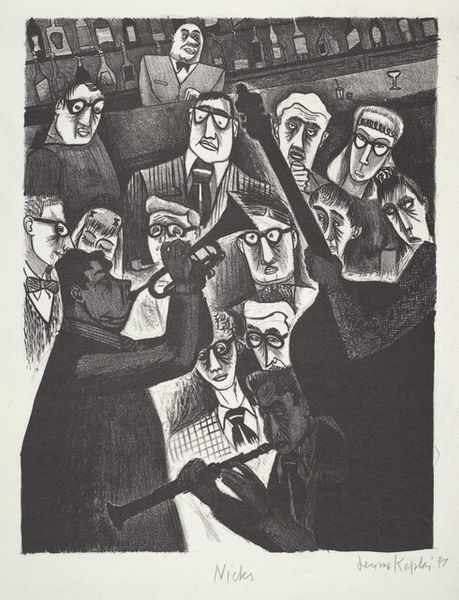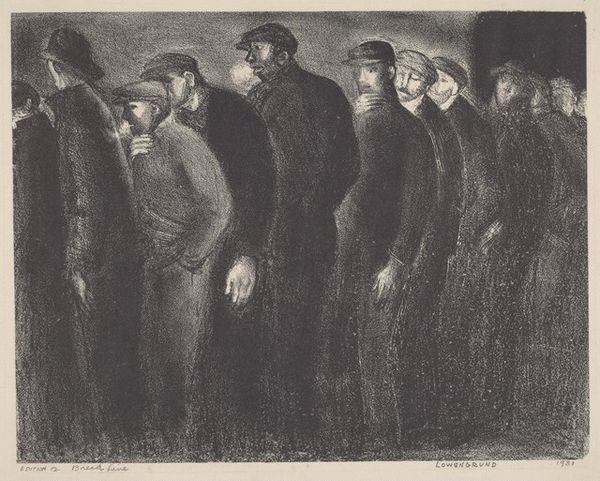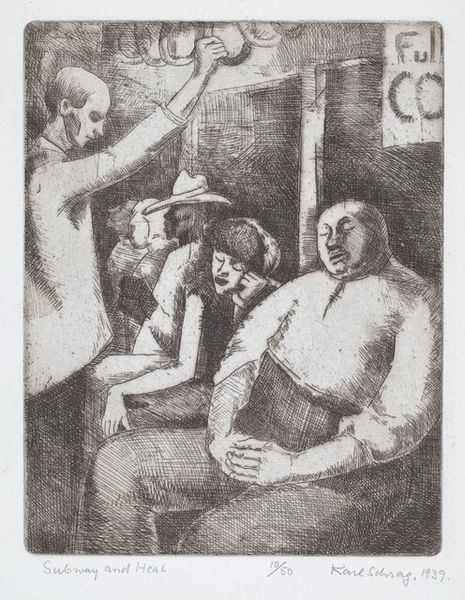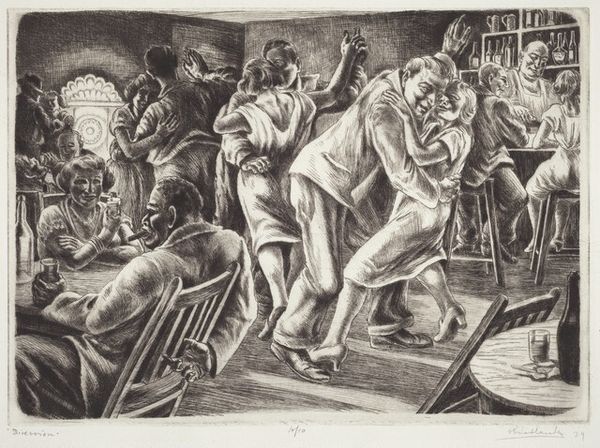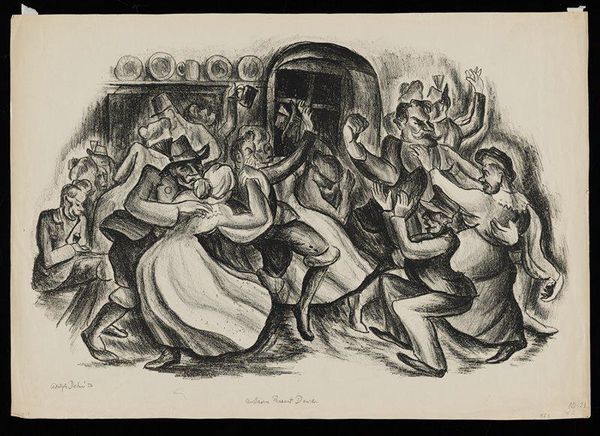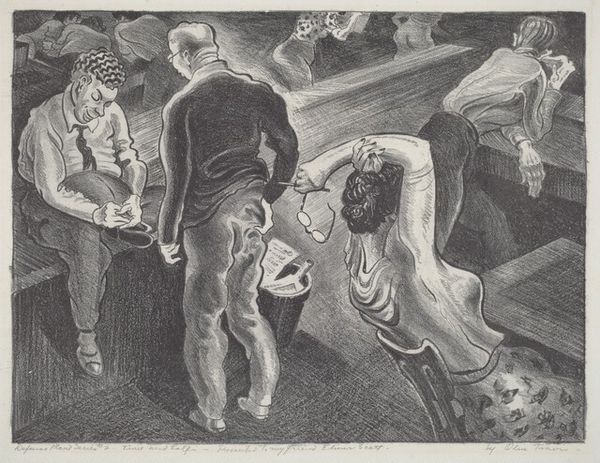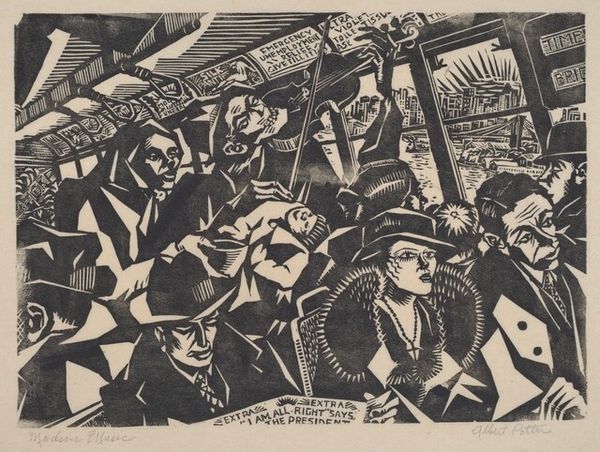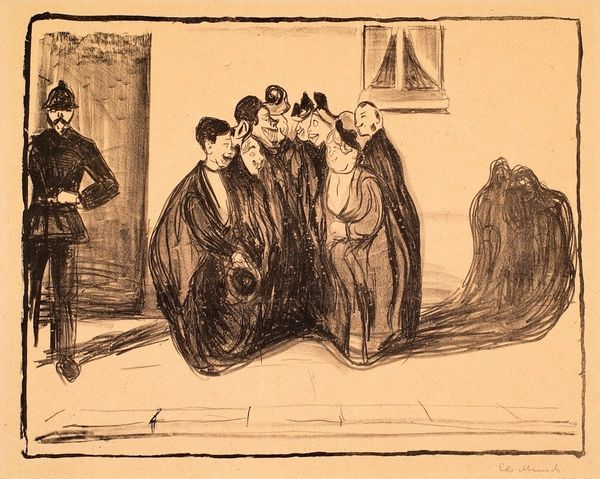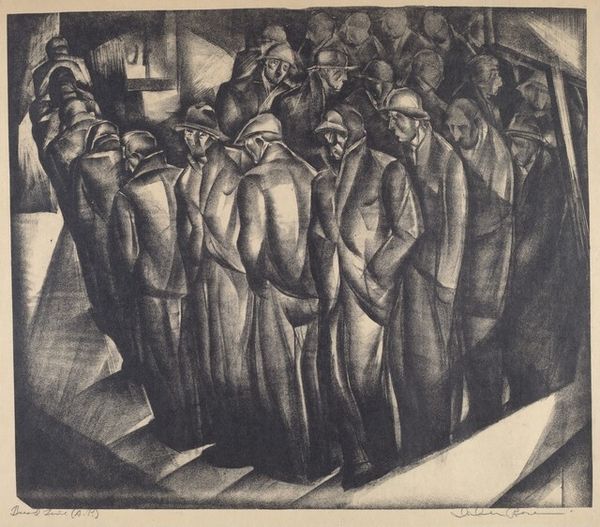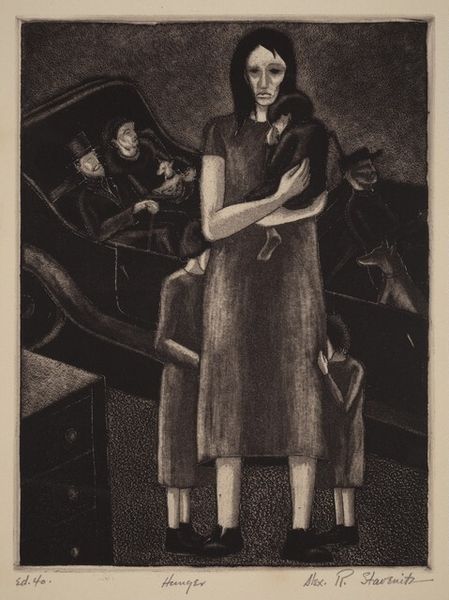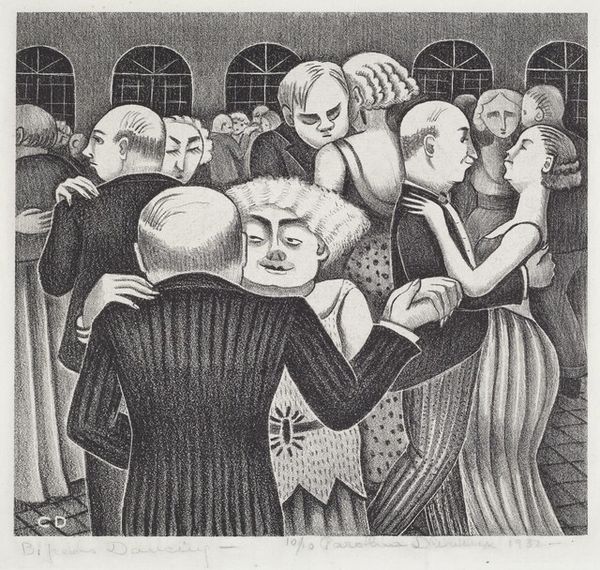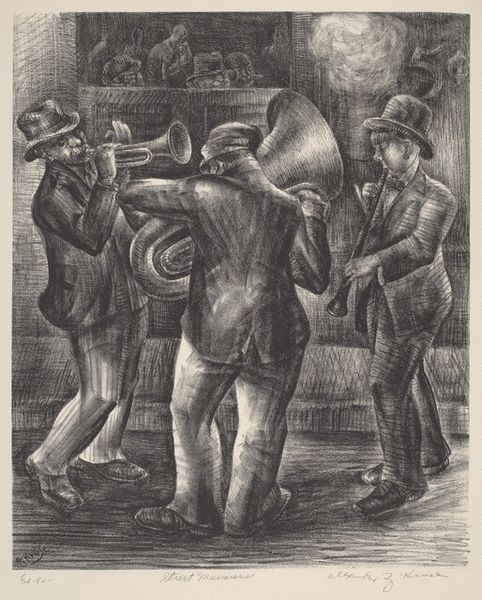
drawing, print, pencil
#
drawing
# print
#
caricature
#
caricature
#
figuration
#
social-realism
#
pencil drawing
#
pencil
#
surrealism
#
modernism
Dimensions: image: 227 x 330 mm sheet: 288 x 404 mm
Copyright: National Gallery of Art: CC0 1.0
Editor: Here we have Elizabeth Olds' "Sidewalk Engineers," created in 1936. What's your first take? Curator: The material execution here, a rather somber print dominated by sharp lines and caricatured figures, sets an almost accusatory tone. The density of the crowd really makes it. Editor: That's an interesting reaction. To me, it evokes a strong sense of anxiety, maybe even desperation, which contrasts sharply with their curious facial expressions. Look at the person curled inside that pipe. Curator: It speaks volumes, doesn't it? Olds’ skillful use of pencil in the print-making process amplifies the roughness and immediacy of the scene. This speaks to a Depression-era concern: How is value assigned, produced, and maintained? Is labour seen or unseen? Editor: The pipe could represent confinement, maybe a sense of being trapped by economic circumstances during the Depression. Does this symbolism connect with common anxieties experienced during this historical moment? Curator: Precisely! Consider that Olds was very invested in accessible art practices; she wanted to use her skill as a labour. You could consider it her form of cultural organizing, using the language of modernism with some social realism thrown in. Editor: Right, her social consciousness is evident. I see some real darkness. How the figures stand around staring, pointing... It reminds me of a pack of vultures observing something on its last legs. I see layers of cultural criticism here, which really hold up to scrutiny nearly a century later. Curator: Yes, her prints were meant to engage. To foster critical awareness of one’s environment and material conditions. And frankly, as a print, it probably helped more hands see her perspective. Editor: Ultimately, Olds' choices resulted in a lasting statement about labor, economic hardship, and the human response to adversity. It definitely gives you something to think about. Curator: Indeed. It really lays bare how our material existence and the very labor that upholds it often goes unseen, even scoffed at.
Comments
No comments
Be the first to comment and join the conversation on the ultimate creative platform.
